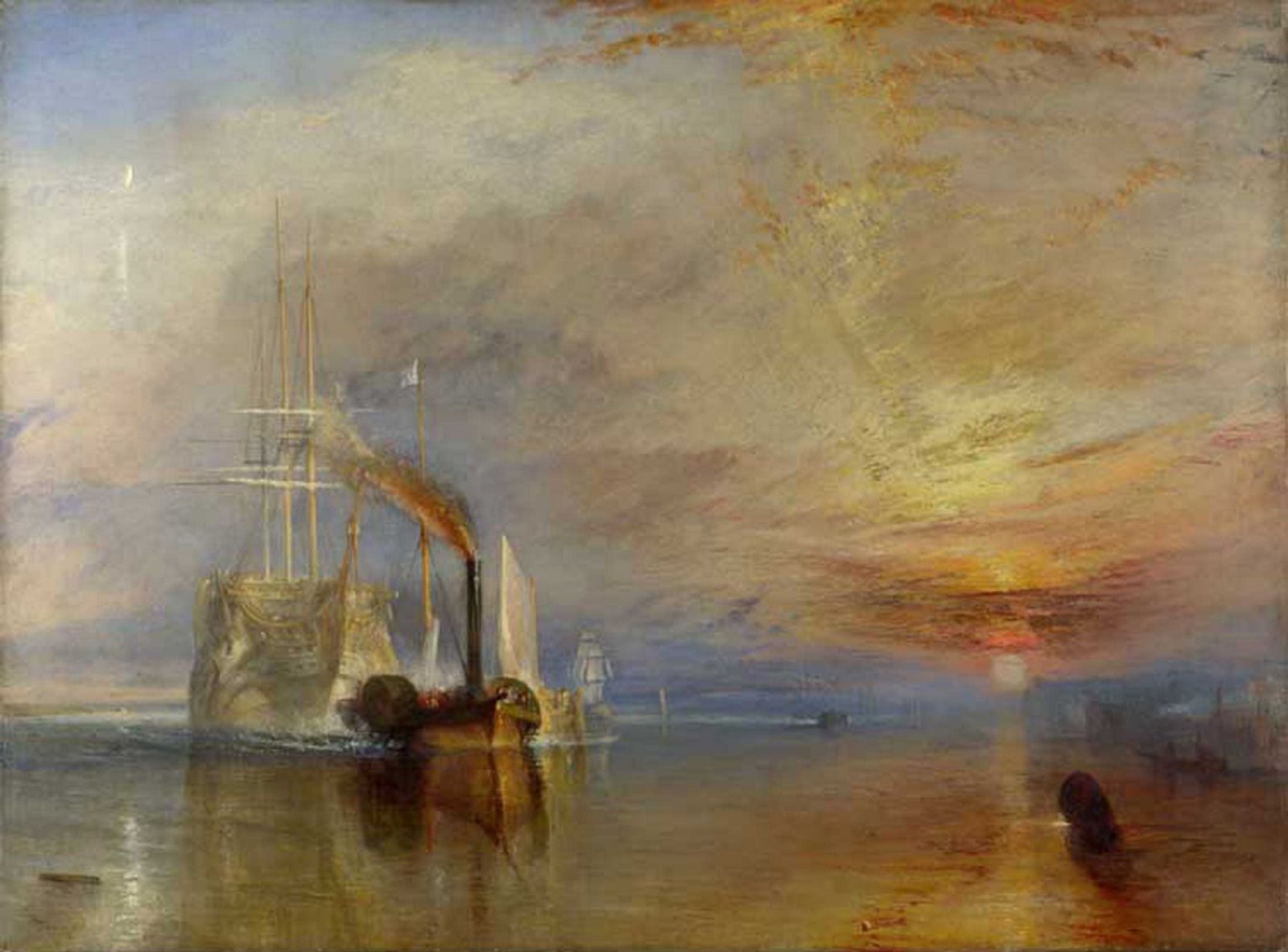
The Fighting “Temeraire” tugged to her last berth to be broken up.
1838. Oil on canvas, 91 x 122 cm; National Gallery, London
Dick asked us to prepare comments on this painting for our April 9th class (see assignment). Here’s what Bonnie, Joëlle, and I had to say.
(Wanda’s comments added April 28.)
Bonnie
I see the cycle of life eternally moving slowly forward. Death is proudly giving way to new life. The Temeraire, ghostly white, appears already dead without its sails and armaments. Although the old ornate wooden ship holds herself proud as she is towed to her destruction, the setting sun creates a final metaphor for the end of her era and her life.
A new day will be dawning with iron, steam-driven ships taking over the seas. Life spews from the smokestack of the vividly colored tug. The tug is full of energy and has the strength to pull the large, highly honored old warship to her last resting place. Iron steam-driven ships now rule the seas. The cycle of life continues with each new dawn.
Joëlle
Looking at this painting one literally is peeling the onion: the more you look at it, the more layers you discover. What appears at first as a single event becomes a symbol for a whole era of changing times. Not only Turner tells us the story but how he feels about it…Rather than an exact rendering of the event Turner makes a suggestion of reality; everything is touched by light almost like by his own emotions and feelings: in this case a sense of loss and nostalgia for the grand past of the British naval power.
The sun setting and the ghost-like coloring of the boat are metaphors for the passing of the old warship while the small and steam-powered dirty tugboat evokes the beginning of the industrial revolution… (Maybe also the people’s revolution and the end of royalty as it used to be).
The whole painting appears to me to be made of opposites and contrasts:
- light / dark
- sun / moon
- warm / cold
- soft, blended, detailed, meticulously painted / rough, emotion-filled brush strokes
- clean / dirty
- wind powered / coal-steamed powered
- life / death
- geometric / organic
- grand / common.
Comment on the word “Téméraire”: (French for temerarious…)
In French has a sense of courageous, fearless
In English fool-hardy, rash, impetuous
Karen
This painting conveys the significance of reality through appearances of reality. The sun is setting on the day, and on the era of sailing ships. The still atmosphere shows the advantage the new steam ships have, and the haze hints at some of their impacts. The pale sailing ship is being towed to a salvage yard by a steam ship, and already looks like a ghost. The steam ship is a crude brown form, while the sailboat is rendered in loving detail. I think Turner is saddened, and painted this poignant scene to mark the occasion.
Wanda
The space is at least as important as the objects. The sky is alive and in places appears more substantial than the boats. The sky and the sea are horizontal planes extending from the foreground into the vanishing point of the setting sun [where sea sun and sky become one], and the composition is circular, allowing the viewer to soar out there and return again. Everything is inter-related and and unified; colour, space, object and composition. There is also a mysterious ethereal quality to it with the pale ships and the whisper of a moon.


